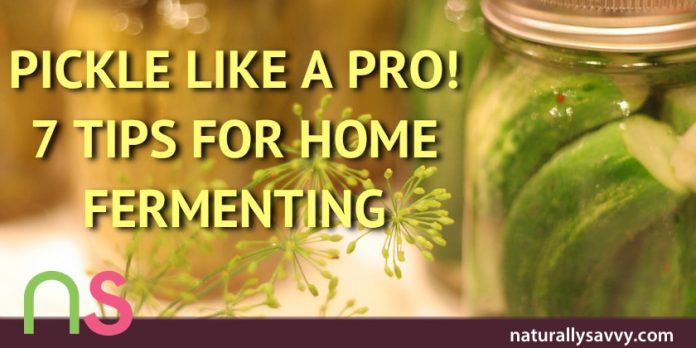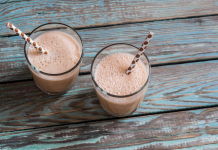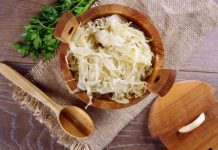
A staple method in food preservation for ages, pickling not only keeps food edible for long periods of time, but it also infuses it with healthy bacterial flora-which plays a crucial role in our digestion. With excessive antibiotic use widespread in Western medicine and commonplace in conventionally raised livestock animals, many Americans suffer from imbalances in digestive flora, which can lead to major health problems.
Fermented foods make up as much as 40 percent of some diets around the world. The probiotic cultures actually make foods more digestible as they help to break down tough proteins like meat. And, having a healthy balance of intestinal flora can prevent and even reverse digestive issues.
While there are many wonderful brands of high quality fermented food available, you can also make your own at a fraction of the cost. If you're adding pickled foods to your diet regularly, you'll soon realize just how much money you can save by making your own. It's a great craft for the whole family. Pickling vegetables and fruits make wonderful gifts as well.
Here are some tips to get you started:
1. Use fresh, organic ingredients
Perhaps it's a no-brainer, but the fresher the food you're fermenting, the better it will come out. Check in with a local farmer about purchasing a case of cukes, cabbage, carrots or even beets if you're planning on big batches.
2. Clean your veggies well
Bacteria, enzymes and other invisibles on your fruits and veggies can affect your pickling. Make sure to clean them well.Read more about the healthiest fruits and vegetables
3. Use pint and quart jars
Large Mason jars have self-sealing lids and can hold a good amount of product. They hold up best in home-canners, too.
4. Invest in a stone crock
Stone crocks are non-reactive and much healthier than plastic. You'll need a one gallon container for five pounds of vegetables, so look into five-pound crocks if you're planning on pickling a good amount of cukes or cabbage.
4. Balance your brine
Cabbage and cucumbers require being kept under a minimum of one to two inches of brine while fermenting. If it's less, you could spoil and lose your whole batch.
5. Let ripen
Once packed after fermentation, let your pickled goods "ripen" another week so the flavor can develop even more.
Read more about how to freeze summer fruits and veggies
6. Label
You'll want to know when you made your batches and labeling is a great way to help you note the date, what ingredients you used and even the days it took to ferment. It can be really useful in helping you perfect your pickling.
7. Take a class
Meeting other picklers and preservers is not only helpful in learning tips and tricks, but it also opens you up to an entire community that you can share finished product with and get together to make big batches as well.
Keep in touch with Jill on Twitter @jillettinger
Image via Mike










